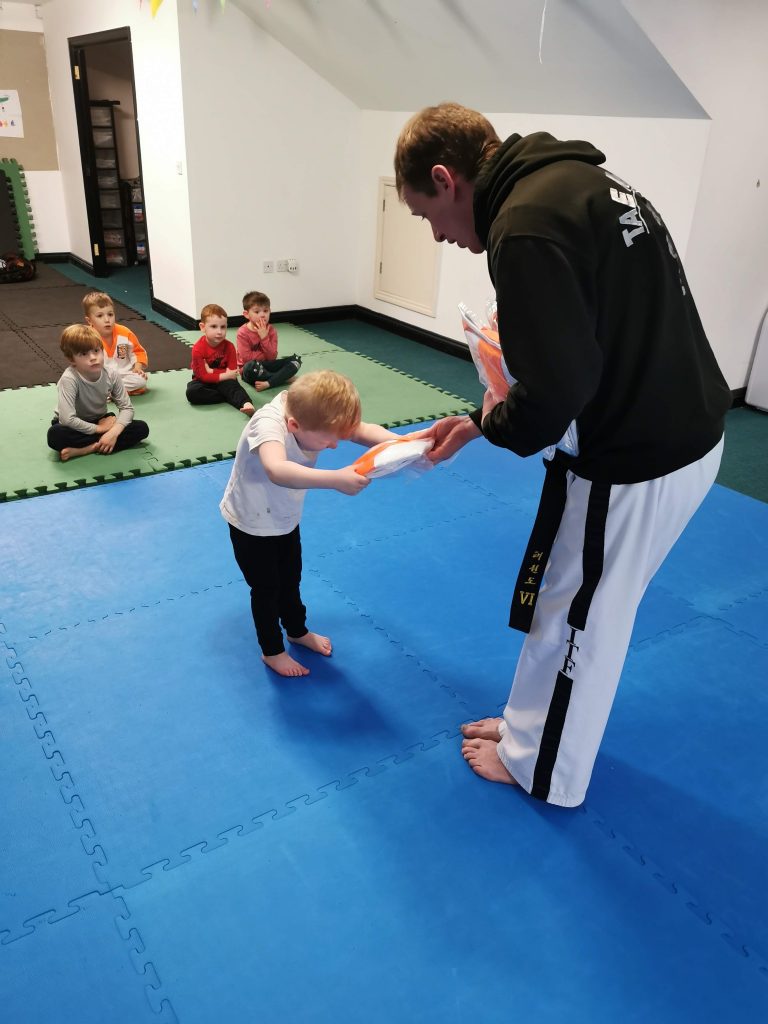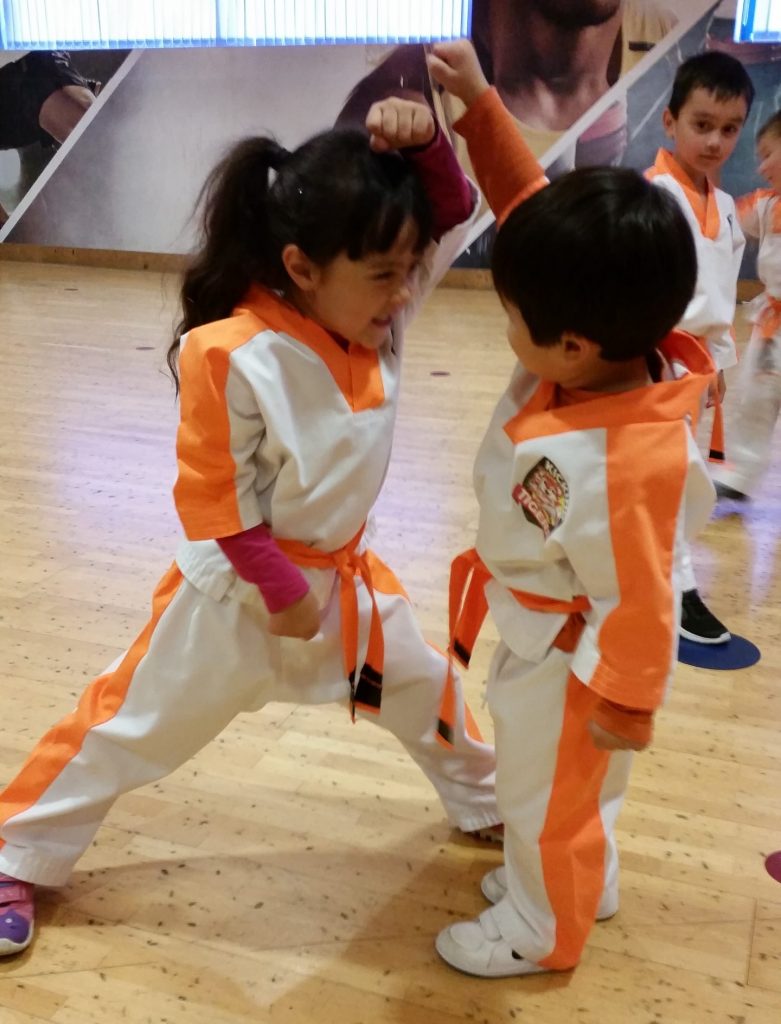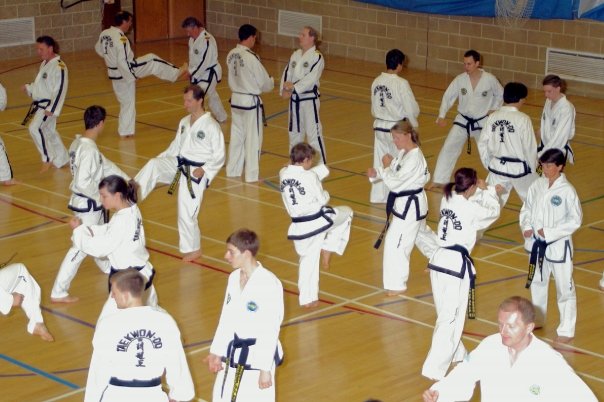Taekwondo is more than just a martial art – it is a discipline that values respect, humility, and self-control. These values can be especially important for children to learn, as they are still developing their social and emotional skills. In this blog post, we will explore why teaching children courtesy through taekwondo is essential for their personal and social development.
One of the key benefits of taekwondo for children is that it helps to build self-esteem and confidence. When children learn new techniques and achieve their goals in the dojang (training studio), it gives them a sense of accomplishment and pride. This can translate to other areas of their lives, such as school and relationships with peers.
However, taekwondo also teaches children the importance of respect and humility. They learn to bow to their instructors and to one another as a sign of respect, and they are expected to be gracious in victory and defeat. This helps children to develop empathy and to understand the value of being a good sport.
Table of Contents
Courtesy Starts With The Taekwondo Bow
The Taekwondo bow is a gesture of respect and courtesy. It is used to show respect to instructors, fellow students, and opponents, and it is an important part of taekwondo etiquette.
The taekwondo bow is usually performed at the beginning and end of class, as well as before and after sparring or other training activities. It is also used to greet or acknowledge others in the taekwondo community.
The bow is also performed when entering and leaving the Dojang (training hall) and when giving or receiving. This goes for gifts, pads or other items. You can see the young boy in the picture receiving his first uniform from his Instructor.

In addition to being a gesture of respect, the taekwondo bow is also an important opportunity for practitioners to practice discipline and self-control. By performing the bow with proper posture and focus, practitioners can demonstrate their commitment to the values of taekwondo.
The 5 Tenets Of Taekwondo
Taekwondo is a martial art that values respect, discipline, and self-control. These values are reflected in the five tenets of taekwondo, which are:
- Courtesy in Taekwondo: practitioners are expected to be courteous and respectful at all times, both on and off the mat. This includes showing respect for instructors, fellow students, and opponents.
- Integrity in Taekwondo: practitioners are expected to be honest and have strong moral character. This includes being truthful and standing up for what is right, even when it is difficult.
- Perseverance in Taekwondo: training can be physically and mentally challenging, and practitioners are encouraged to persevere and never give up. This tenet also includes the idea of “no pain, no gain,” as progress often requires overcoming challenges and setbacks.
- Self-control in Taekwondo: practitioners are expected to control their actions and reactions, both on and off the mat. This includes managing emotions and practicing discipline in all aspects of life.
- Indomitable spirit in Taekwondo: The indomitable spirit is the belief that one can overcome any obstacle and achieve their goals through hard work and determination. Taekwondo practitioners are encouraged to cultivate this spirit in their training and in their daily lives.
By upholding these five tenets, taekwondo practitioners can develop strong character and become well-rounded individuals.
Teaching Your Child Courtesy Through Taekwondo
Taekwondo is an excellent way to teach children the value of courtesy and respect. Here are a few tips for using Taekwondo to teach your child these important values:
- Set a good example: As a parent or instructor, it’s important to model the behaviour you want to see in your child. Show respect and courtesy to your child, as well as to other students and instructors.
- Emphasise the importance of respect: Make it clear to your child that respect is a key part of martial arts training, and explain why it is important. For example, respect helps to create a positive and supportive learning environment, and it is a key part of being a good sport.
- Encourage good manners: Martial arts training provides opportunities for children to practice good manners, such as bowing and using appropriate titles. Encourage your child to use these manners consistently, both in and out of the dojang (training studio).
- Reward good behaviour: When your child demonstrates respect and courtesy, be sure to praise them and provide positive reinforcement. This can help to encourage your child to continue practicing these values.
By following these tips, you can help your child to learn and internalise the values of respect and courtesy through martial arts training.
How To Teach Your Child Martial Arts
Teaching your child martial arts can be a rewarding experience for both parent and child. Not only does it promote physical fitness and discipline, it also helps children to develop self-confidence and self-defence skills. If you are interested in teaching your child martial arts, here are a few tips to keep in mind:
- Choose a martial art that is age-appropriate: Different martial arts have different physical demands and training styles, so it’s important to choose a martial art that is appropriate for your child’s age and physical abilities. Some martial arts, such as taekwondo is well-suited for children, while others may be more physically demanding.
- Find a reputable instructor or school: Look for an instructor who has experience teaching children and who has a positive and patient teaching style. It’s also important to choose a school that values safety and has appropriate facilities and equipment.
- Be patient and supportive: Learning martial arts can be challenging, and it may take your child some time to progress. Encourage your child to stick with it and to work hard, but also be understanding if they have off days or struggle with certain techniques.
- Make it fun: Martial arts can be enjoyable for children if it is presented in a fun and engaging way. Encourage your child to have fun and to try new things, and be sure to praise their efforts and accomplishments.
By following these tips, you can help your child to get the most out of their martial arts training and to develop important life skills along the way.
Kicking Tigers – The Early Years Martial Arts Program
Kicking Tigers is a martial arts program for children ages 3 to 6 that is designed to be fun, interactive, and age-appropriate. The program focuses on basic movements and coordination, as well as social skills such as taking turns and following directions. It also incorporates elements of play and fun to keep young children engaged and motivated.
The program is taught by experienced instructors who are patient and positive, and who are trained to work with young children. Classes are held in a safe and welcoming environment, and the program is structured in a way that is tailored to the needs and abilities of young children.

Kicking Tigers also offers special events and activities, such as holiday camps and birthday parties, which provide additional opportunities for children to learn and have fun.
Overall, Kicking Tigers is a well-structured and engaging martial arts program for children ages 3 to 6. If you are interested in enrolling your child in the program, it is recommended to visit the Kicking Tigers Facebook page or contact the instructors directly to learn more.
Courtesy And Respect To Elders
Teaching children about courtesy and how to show respect to their elders is an important part of parenting and socialisation. Children learn how to interact with others and navigate social situations through observation and imitation, so it’s important for parents and caregivers to model respectful behavior. This can include using polite language, saying “please” and “thank you,” and using proper titles when addressing adults. It’s also important to teach children to listen when adults are speaking and to not interrupt. Showing respect to their elders can also include helping out with tasks, such as carrying groceries or offering to do errands. It’s important to remember that teaching children about courtesy is not about creating a power dynamic, but rather about instilling values of kindness, consideration, and respect for others. When children learn to show respect to their elders, they are also learning how to be empathetic and compassionate towards others in general.
The Impact Of Taekwondo Your Child’s Development
The benefits of teaching children courtesy through taekwondo go beyond just personal development. It can also have a positive impact on children’s social lives. When children learn to respect their peers and to be good sports, they are more likely to have positive relationships and to be well-liked by their classmates. This can lead to a more positive and inclusive school environment.
In conclusion, teaching children courtesy through taekwondo is essential for their personal and social development. It helps to build self-esteem, respect, humility, and self-control, which can have a positive impact on their relationships and overall well-being. If you are a parent or instructor looking for a way to help children develop important life skills, consider introducing them to the discipline of taekwondo.





